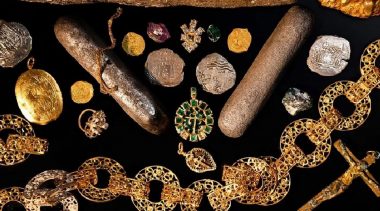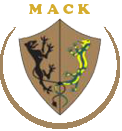 Using historical records, a new initiative has identified and mapped 176 wrecks.
Using historical records, a new initiative has identified and mapped 176 wrecks.
Underwater researchers have encountered many other shipwrecks while studying the Maravillas in the Bahamas.
Treasure hunters have long been obsessed with retrieving shiny gold doubloons and dazzling jewels from shipwrecks. But these wrecks are worth far more than the treasures they hide below the ocean’s surface; they also offer a window into the past, revealing new information about politics, shipping routes, navigation, shipbuilding, slavery and more.
Now, researchers want to shine a light on the sunken vessels’ rich archaeological, historical and cultural value. To start, they’ve created a new master map of the wrecks surrounding some of the Bahamas islands in the west Atlantic Ocean.
“Beyond seaborne conquistadors hauling gold, silver, emeralds and pearls back to Spain, mapping the wrecks of the Bahamas has uncovered the forgotten lives of merchants, warships, fishermen, slavers and even ancient salvors,” James Jenney, a maritime historian who led research efforts for the project, tells Smithsonian magazine.
Of the 176 shipwrecks researchers uncovered in archival materials, only 19 have been identified underwater.
The project is a collaboration between Jenney and Allen Exploration, a company partnering with the Bahamian government to study the area’s shipwrecks and maritime history. Perhaps most famously, Allen Exploration’s team has been surveying and recovering treasures from the wreck of the Maravillas, a Spanish ship loaded with gold, silver and gems that sank in 1656.
“In our dives [to explore the Maravillas], we trip over wreck after wreck,” says Carl Allen, the company’s founder, in a statement. “For decades, the Bahamas’ lost ships have been silent phantoms. So many ships of war and trade sailed through and sank in these waters. Finally, we’re figuring out their names, stories and the excitement of what’s still down there.”
After poring over archival materials dating to between 1526 and 1976, researchers identified and mapped 176 shipwrecks in a region surrounding Grand Bahama, Great Abaco and other islands in the archipelago. They also made a database with key facts about each vessel, including its name, the date it sank, its cargo, the type of disaster that struck and its country.
From that information, they noticed some patterns. For instance, American ships accounted for 52 percent of the wrecks, followed by Britain with 24 percent and Spain with 13 percent. The majority of the wrecks—some 73 percent—occurred off an area known as western Little Bahama Bank. And while the researchers found a smattering of ships from the 16th, 17th and 18th centuries, the majority—82 percent—date to the 19th century.
Most were also merchant vessels, carrying 251 different kinds of cargo, which ranged from molasses and sugar to lumber and military provisions. Some were also transporting whiskey, rum, madeira wine, coconuts, brandy, bacon, fish, potatoes, salt and other foods and beverages. Cotton was also a particularly popular (and profitable) type of cargo.
While hurricanes plague the Bahamas, most of the ships sunk after running into reefs or island shores, according to the researchers. This made them easy pickings for divers who could salvage and sell their cargoes. According to the historical records, Bahamian salvors retrieved cargo from 60 ships between 1656 and 1908, grabbing gunpowder, cotton, sugar, molasses and nearly anything else they could get their hands on. For their efforts, they typically took home between 45 and 66 percent of the cargoes’ value, per the researchers.
Of the 176 shipwrecks researchers recently found in archival materials, only 19 have been identified underwater so far, meaning the area is ripe for further hands-on exploration.
“Without exploring the historical archives, we’d have no clue about the total maritime story of the Bahamas, especially the richness of cargoes traded,” Michael Pateman, director of the Bahamas Maritime Museum, tells Smithsonian magazine.
The project may also someday help governments and organizations take steps to preserve the region’s unique underwater cultural heritage. As Sean Kingsely, a marine archaeologist who worked on the project, says: “You can’t manage what you don’t know exists.”
Moving forward, the researchers also hope to expand their historical research. No one really knows how many ships are resting on the seafloor in this region, but some estimates put the number at more than 5,000.
As Allen says in a statement, “The potential for maritime archaeology in the Bahamas is extremely bright.”
